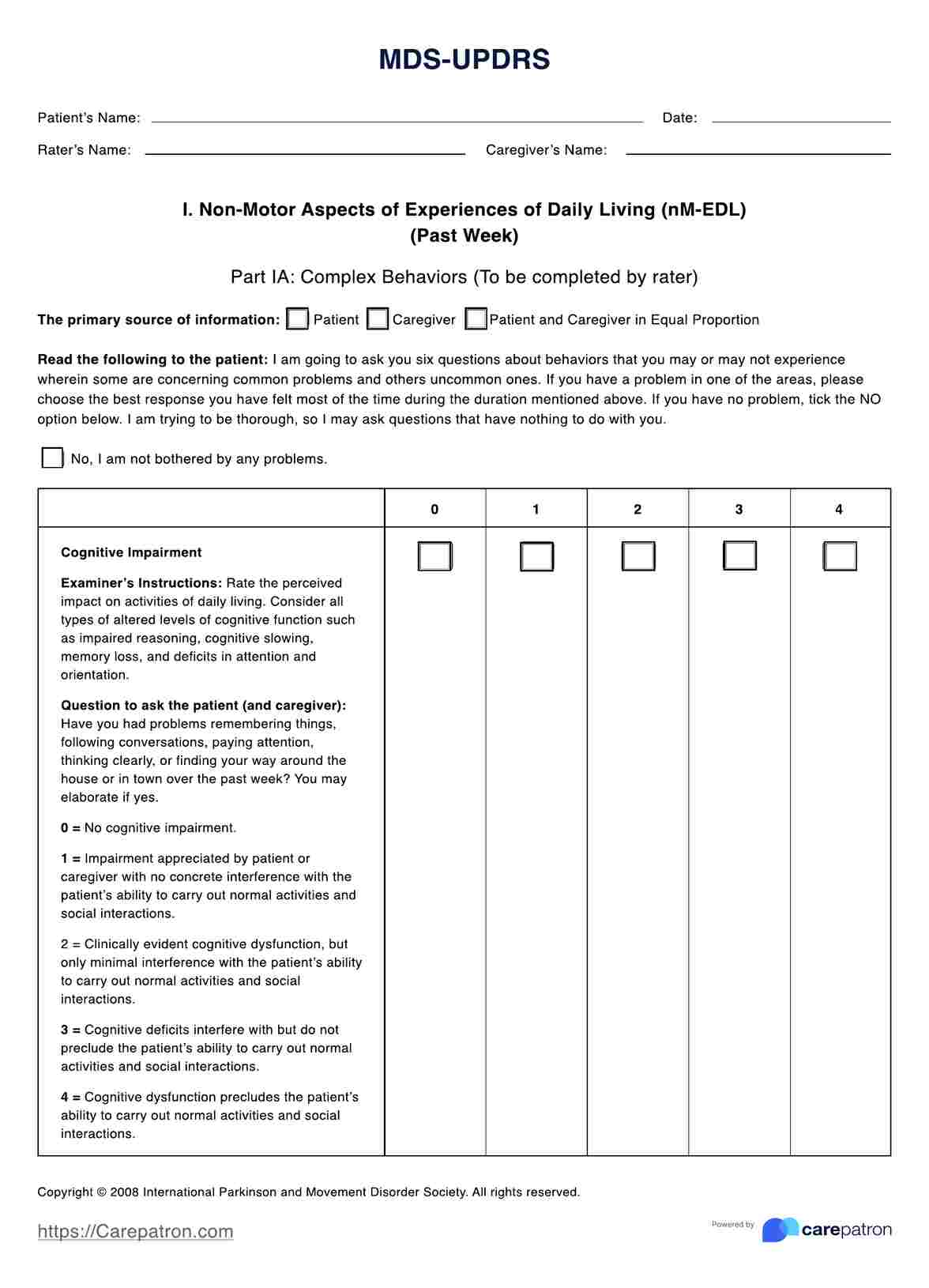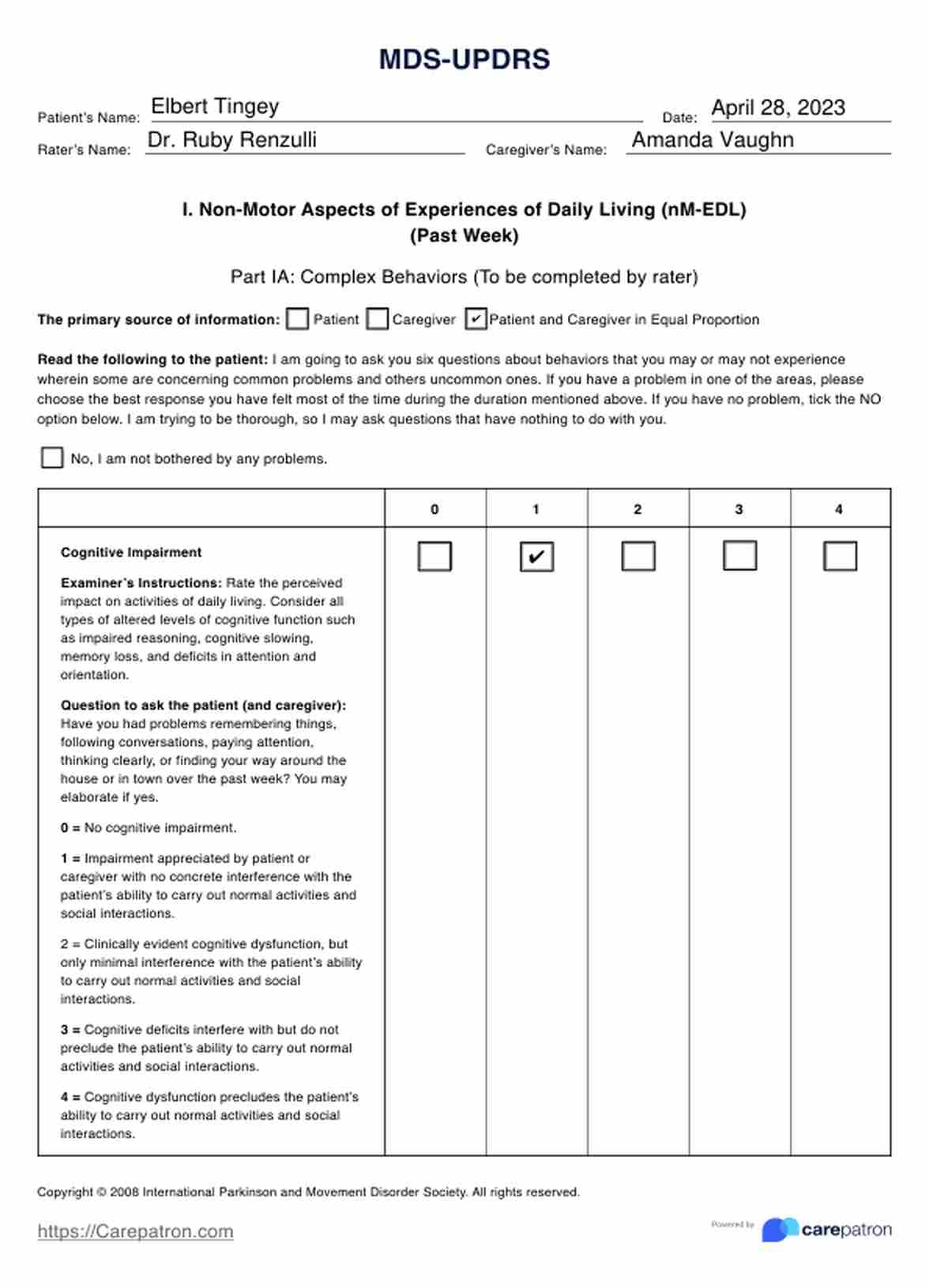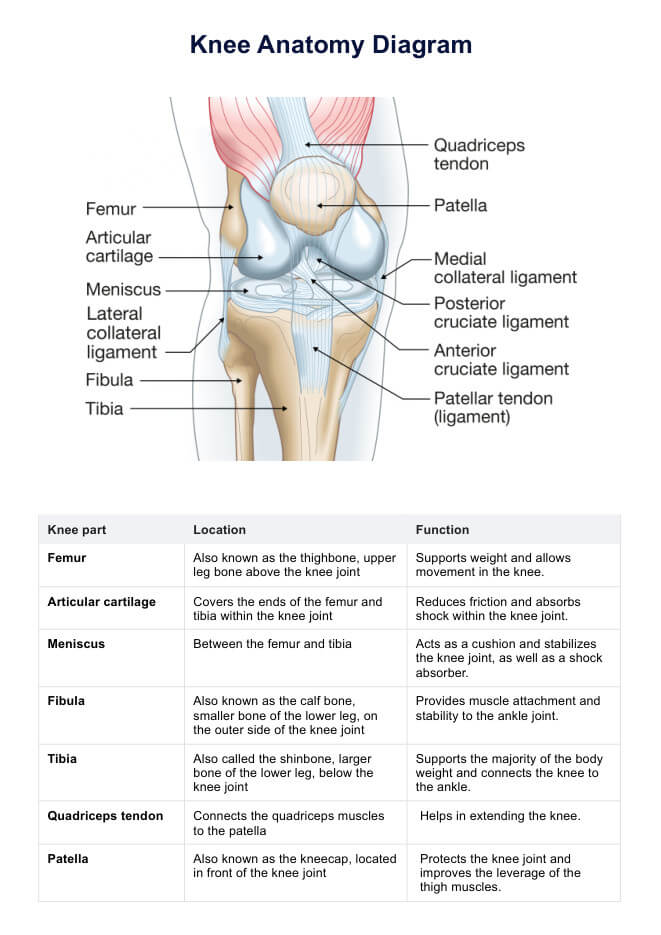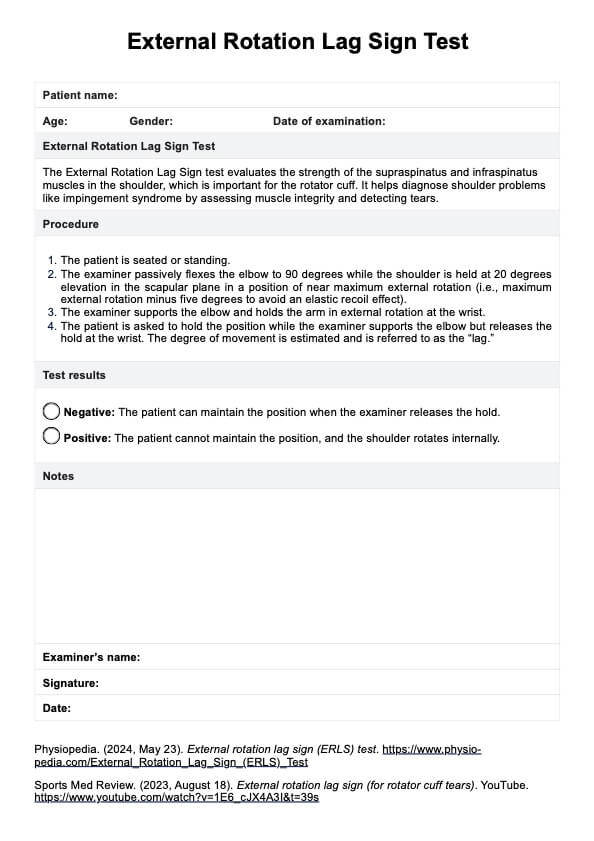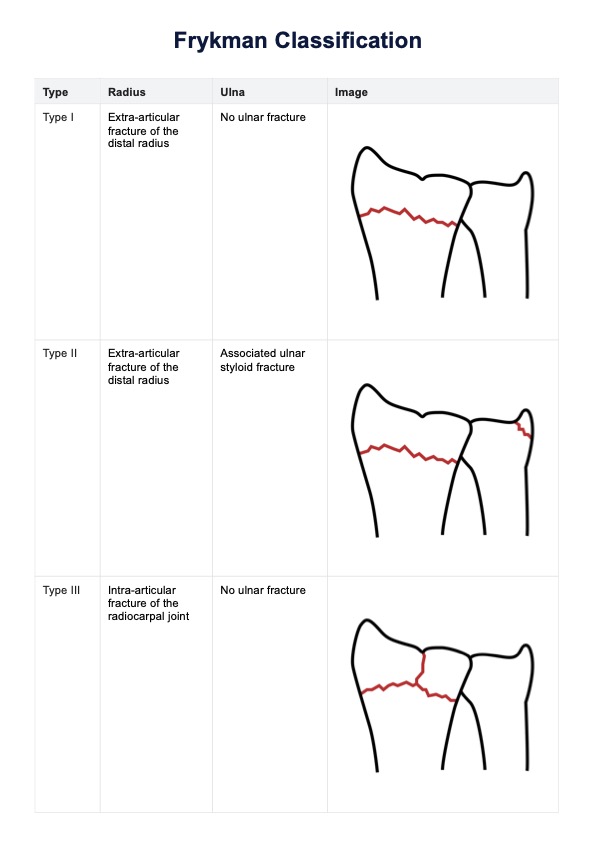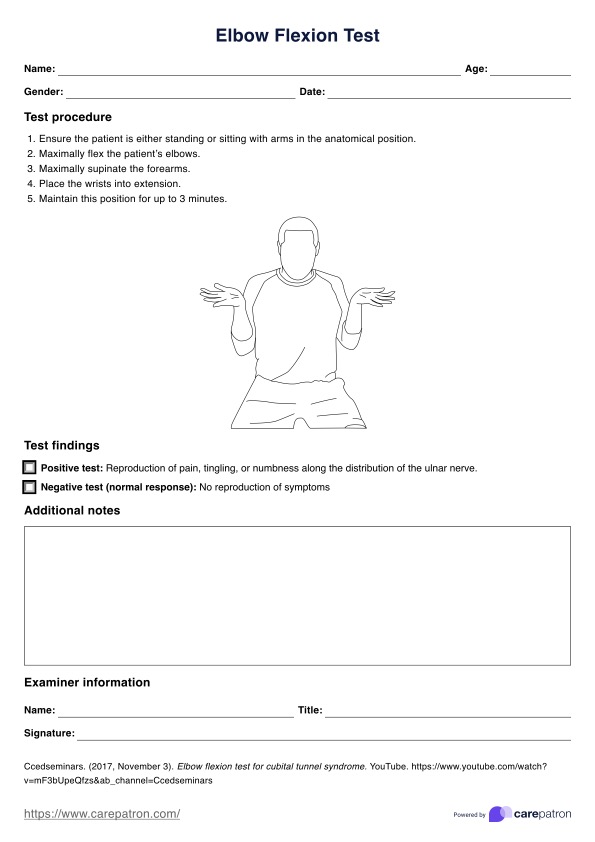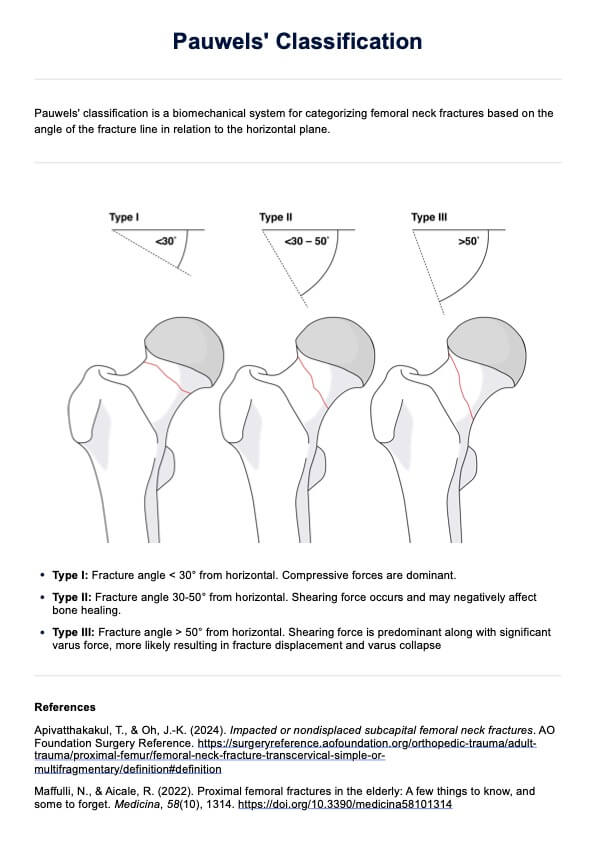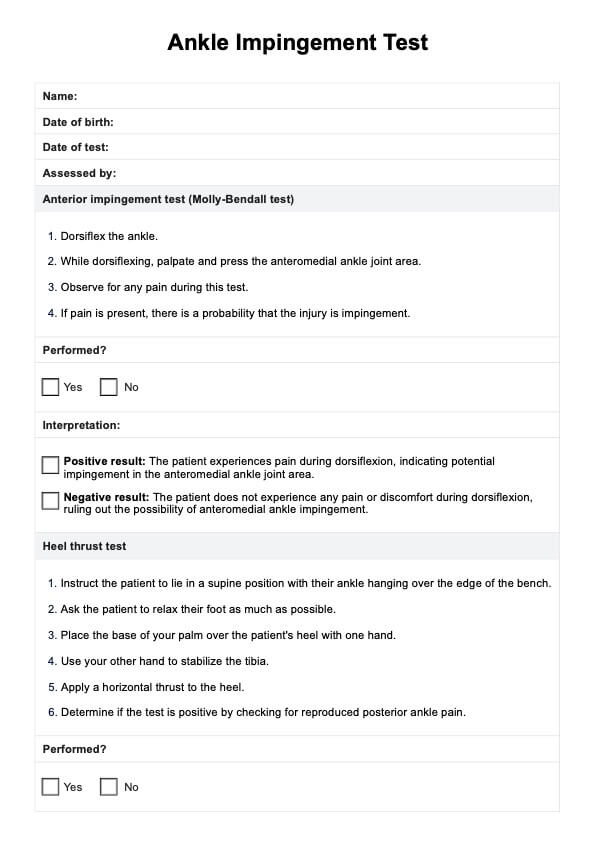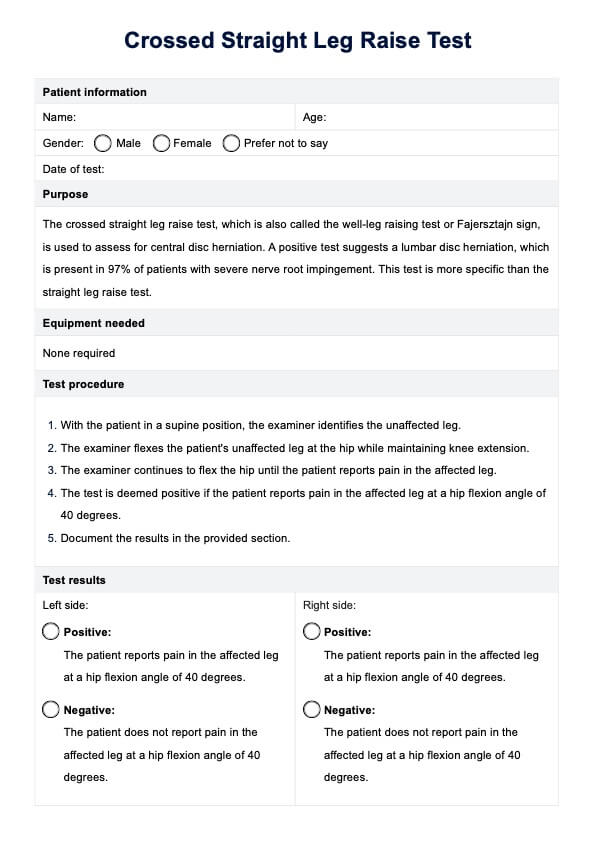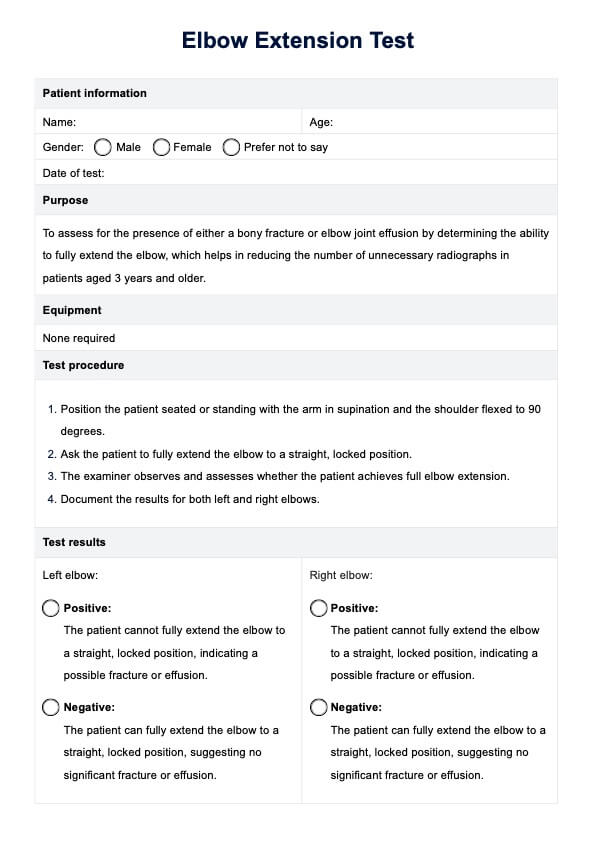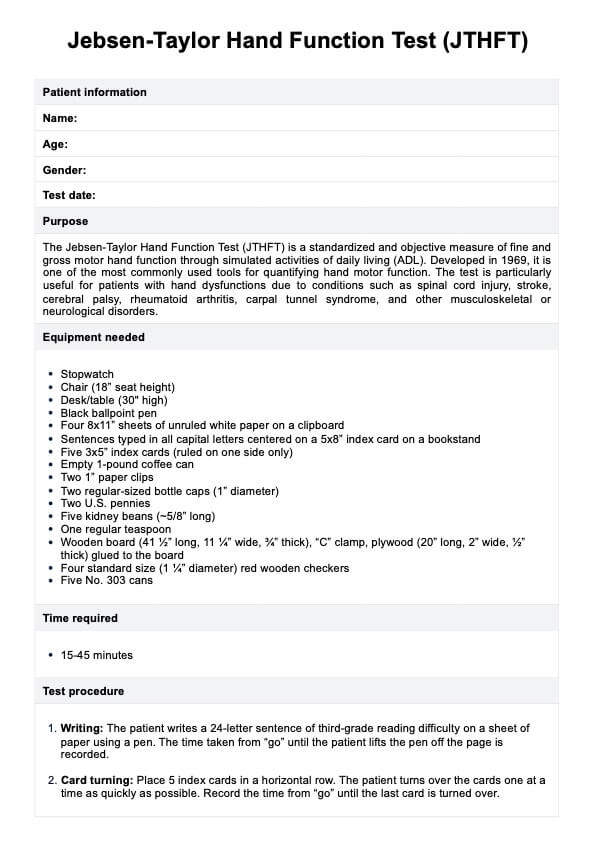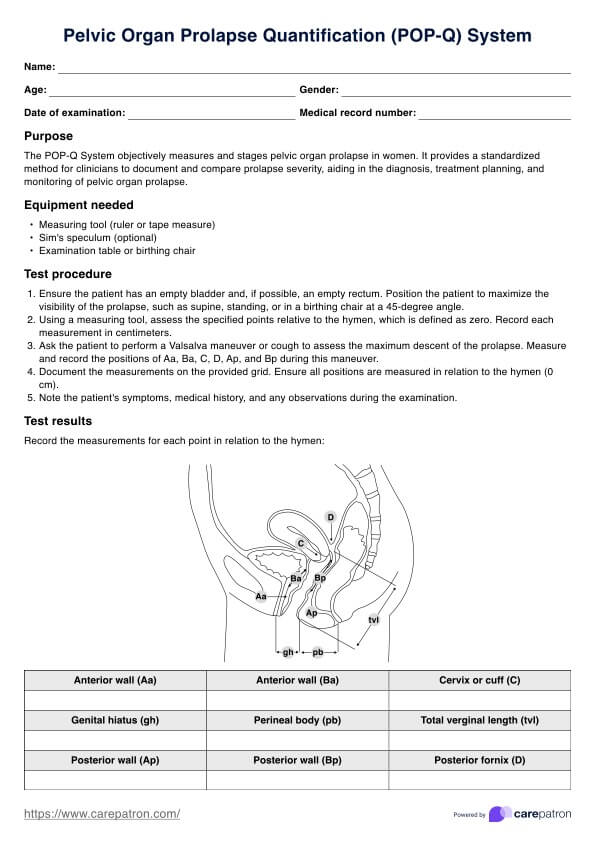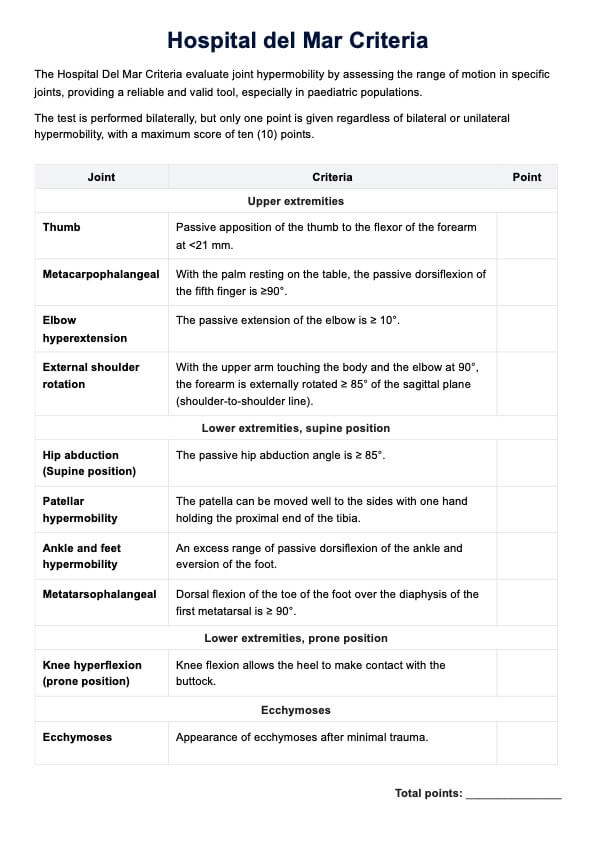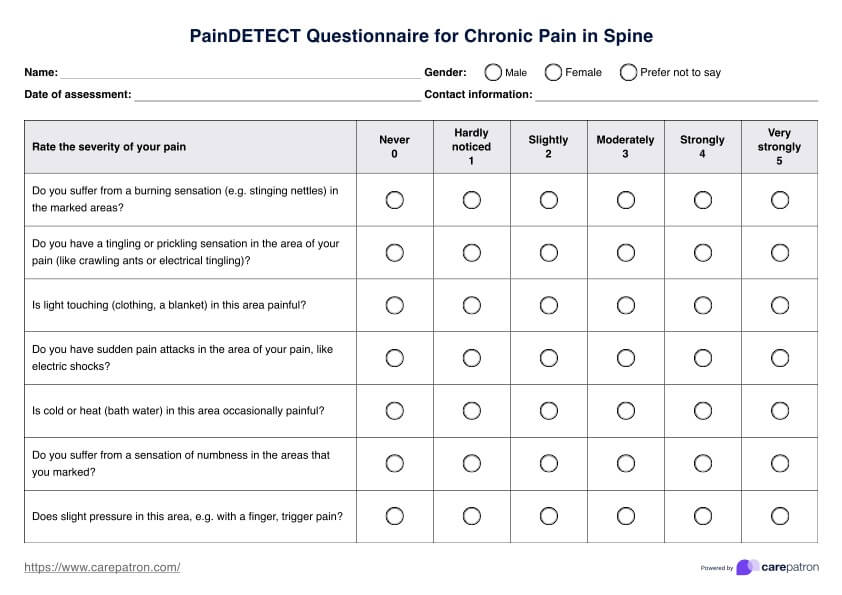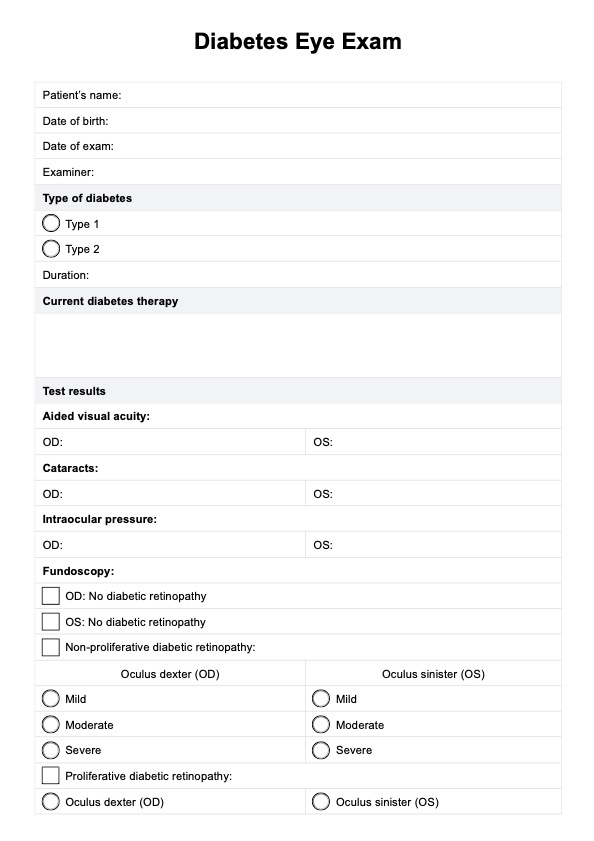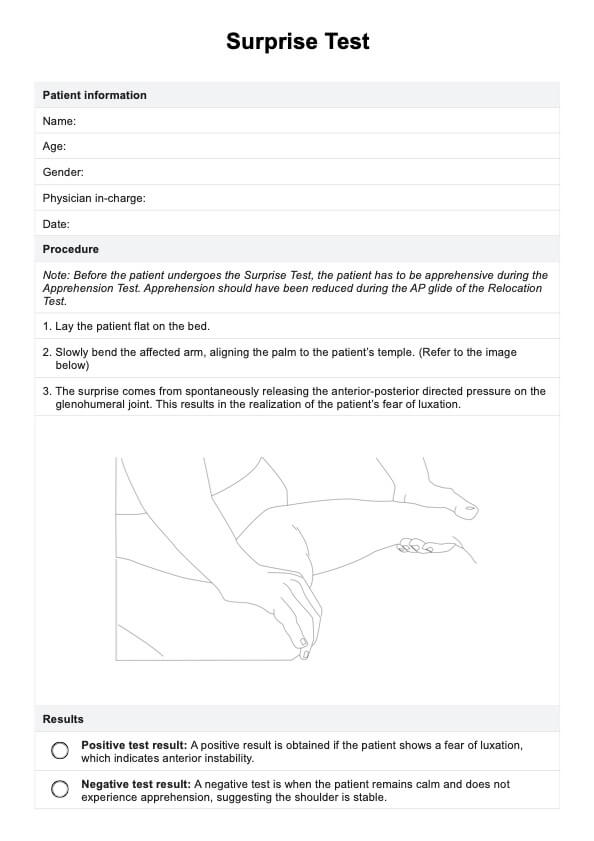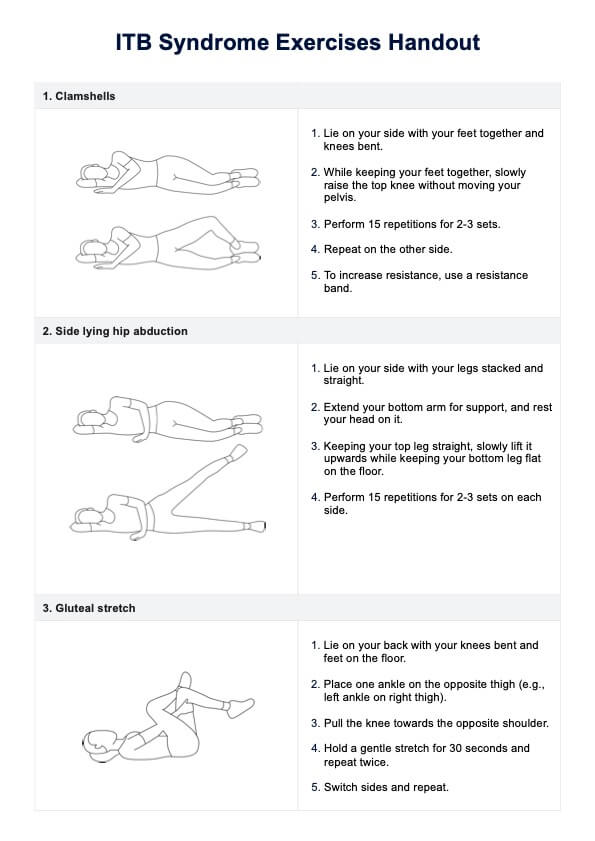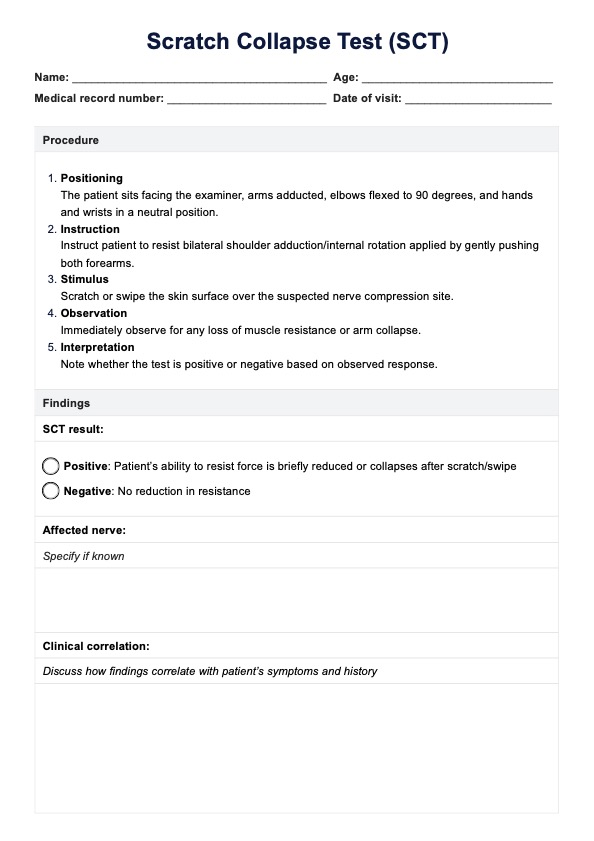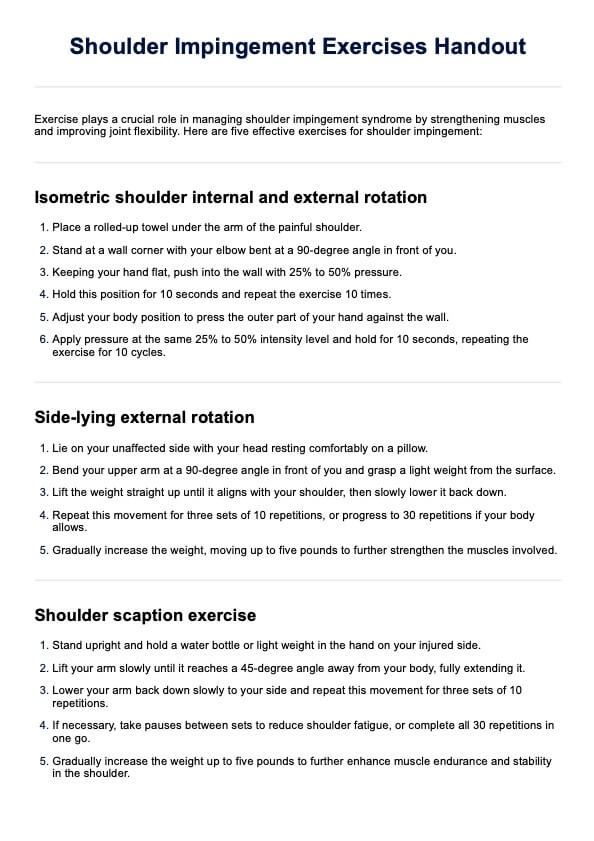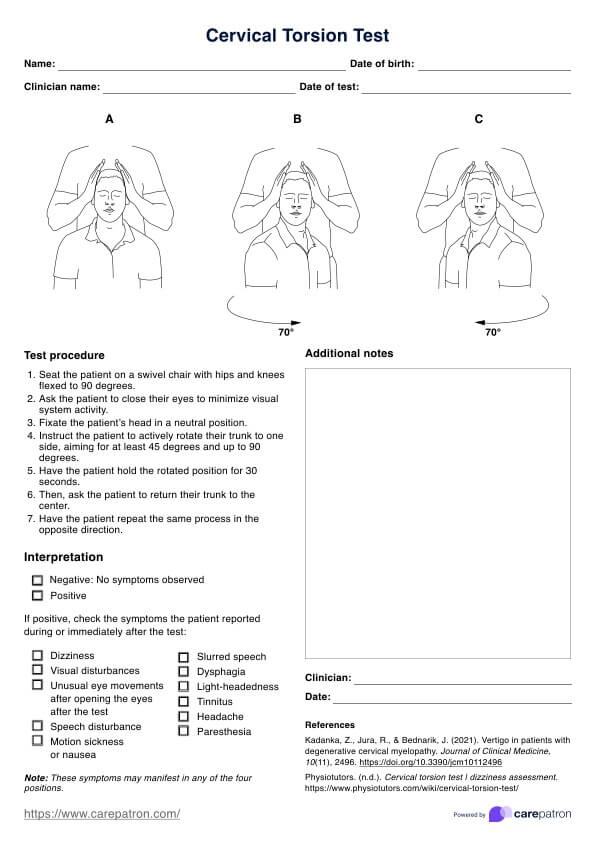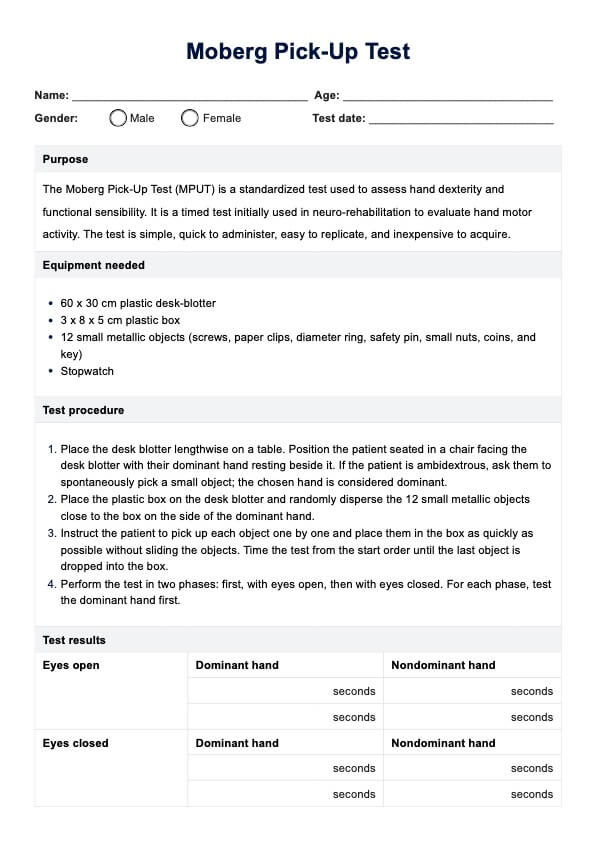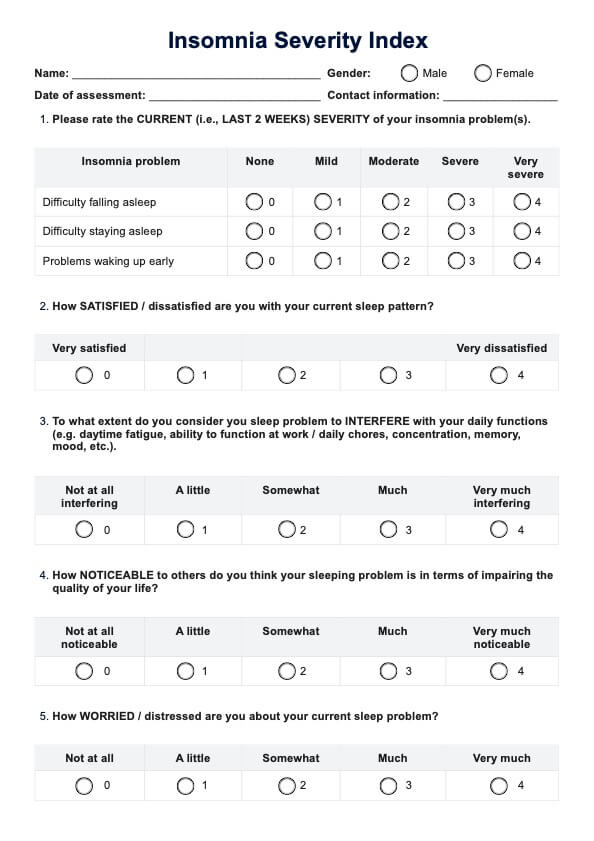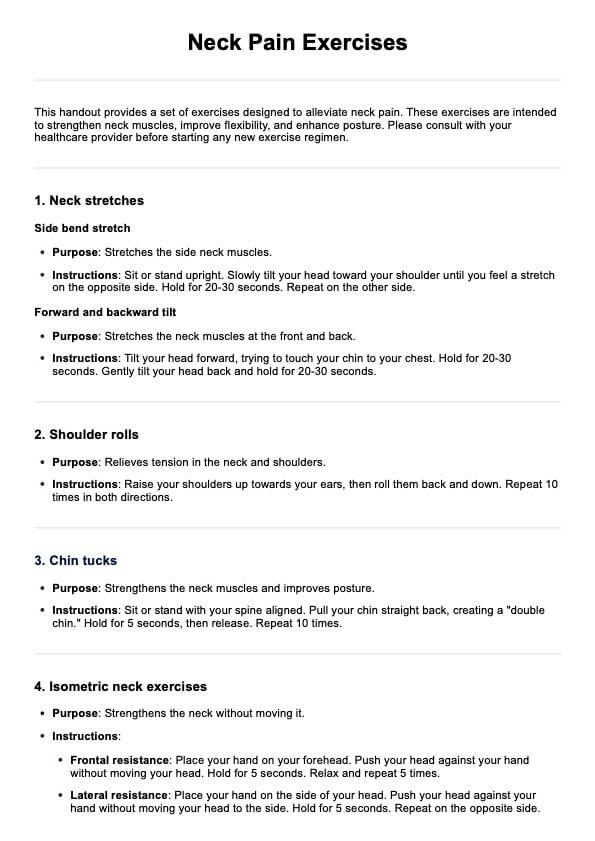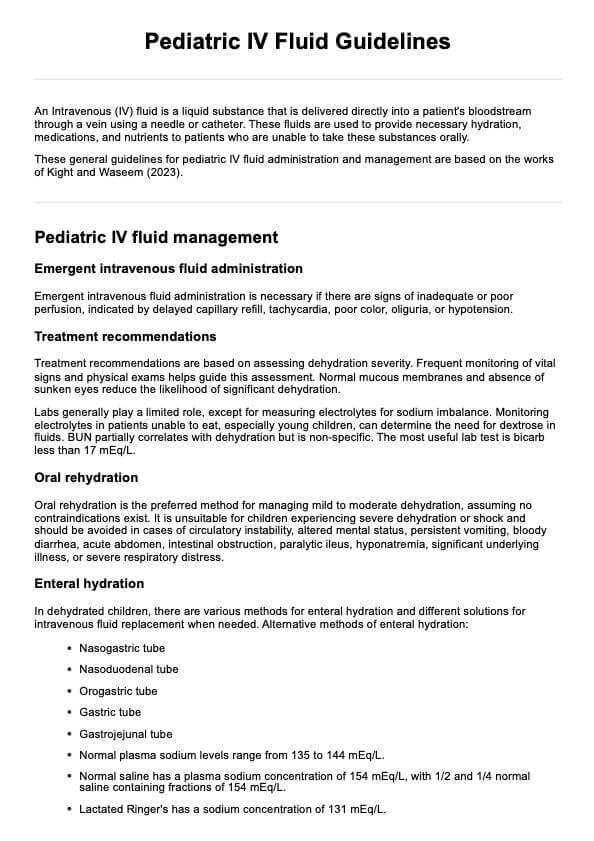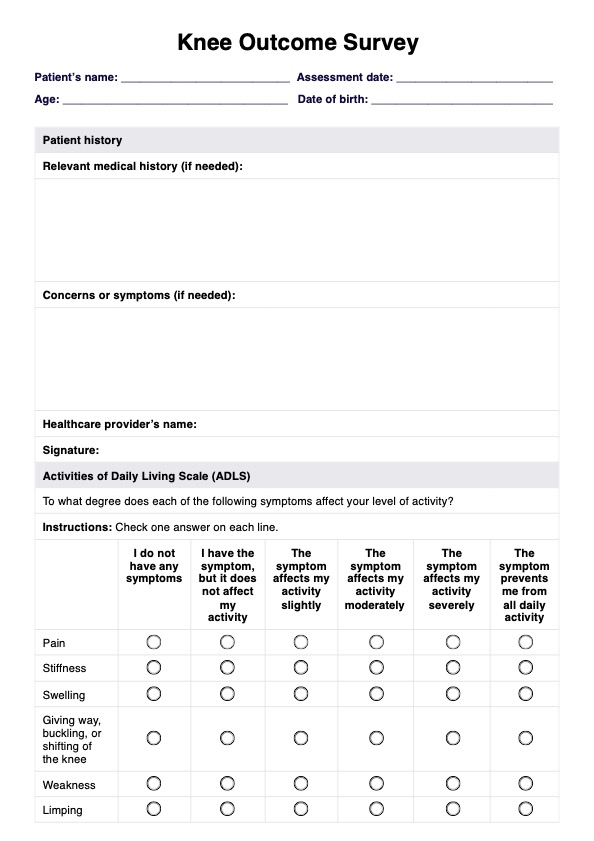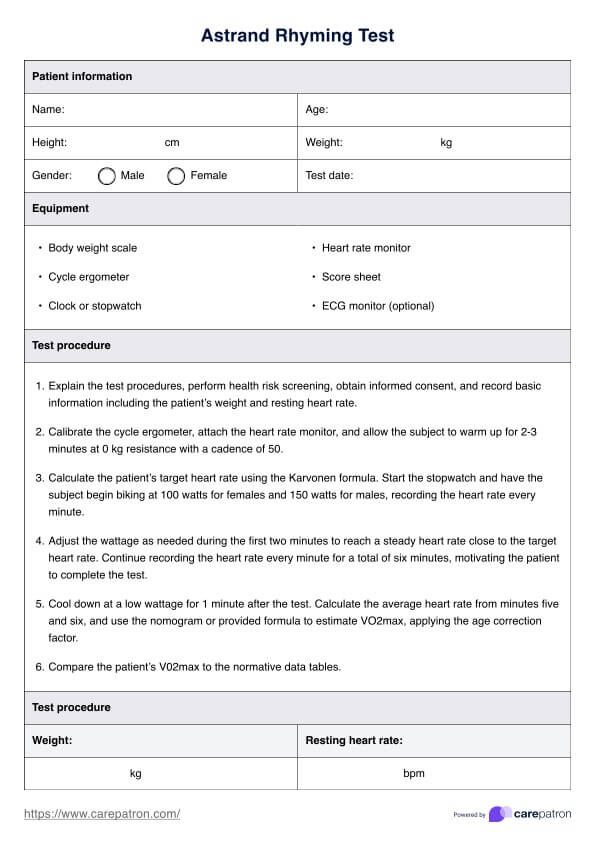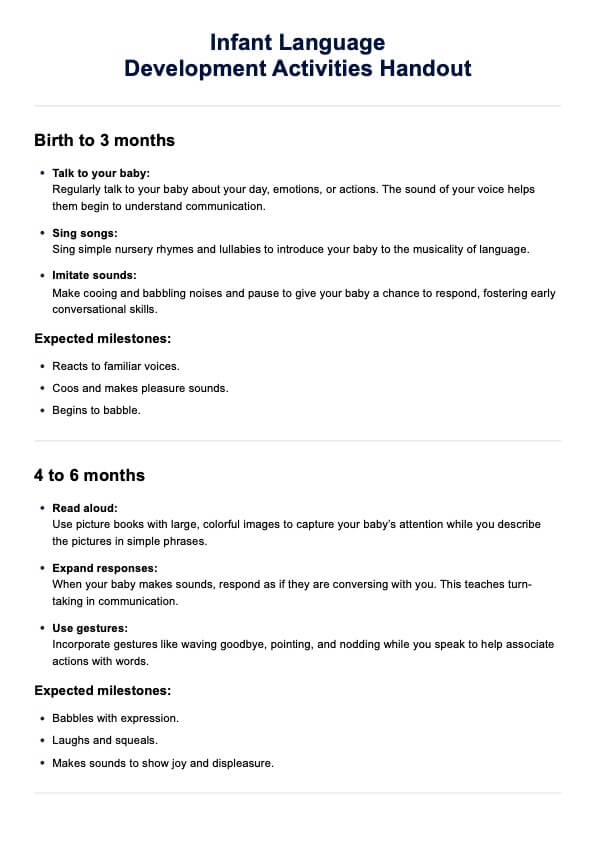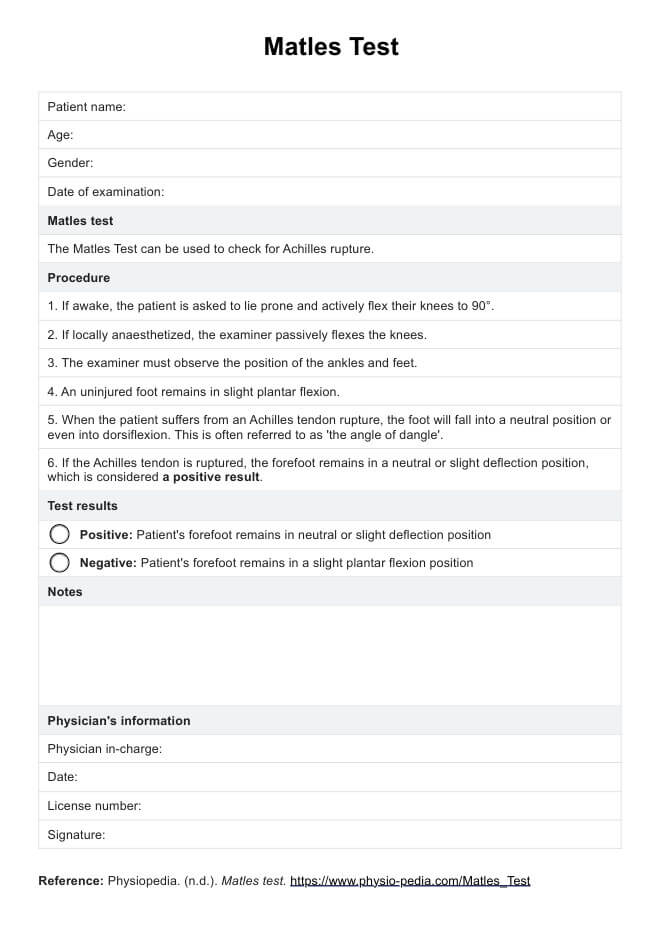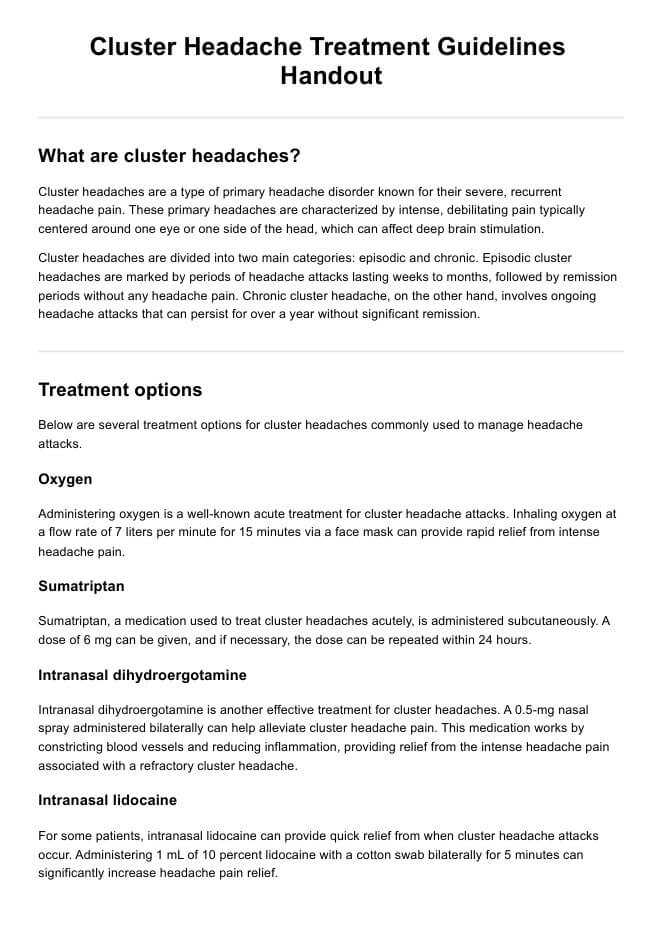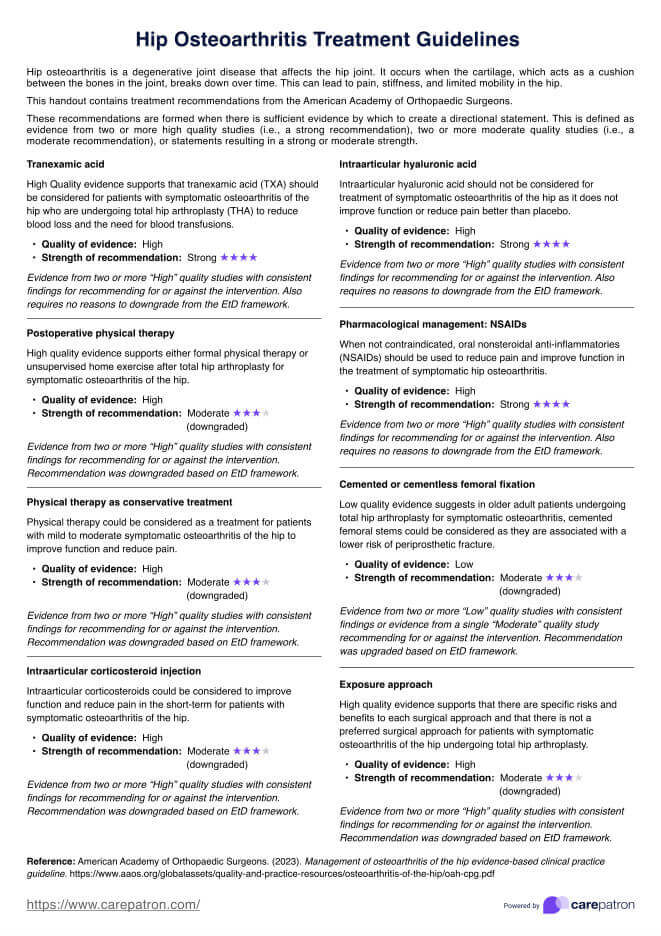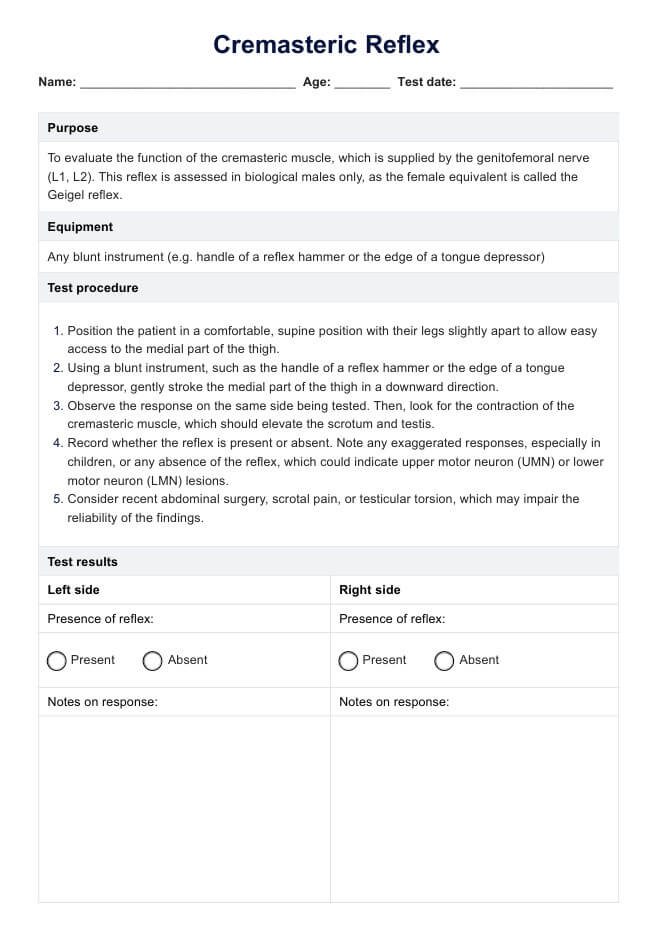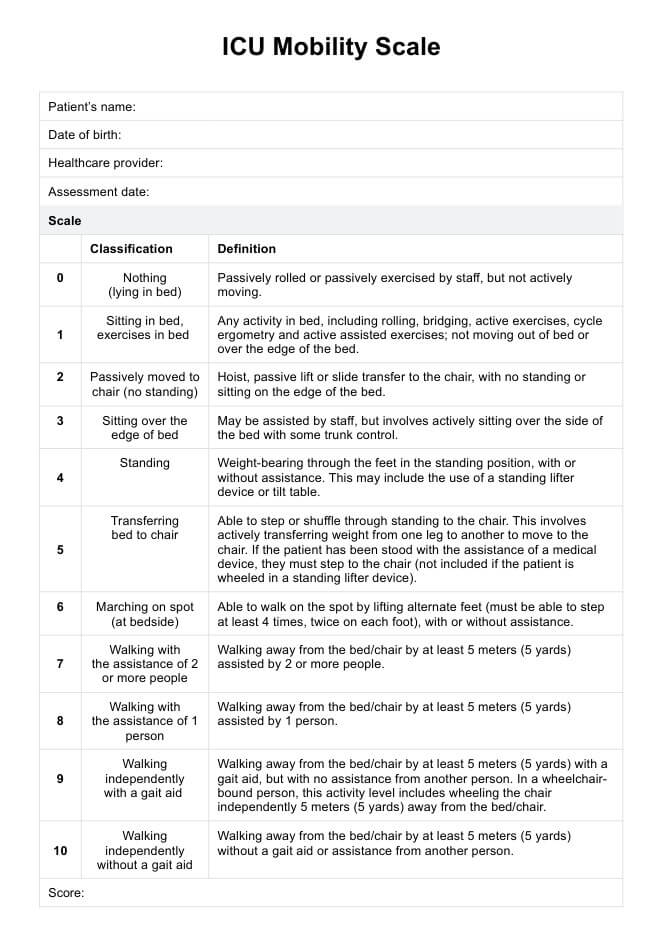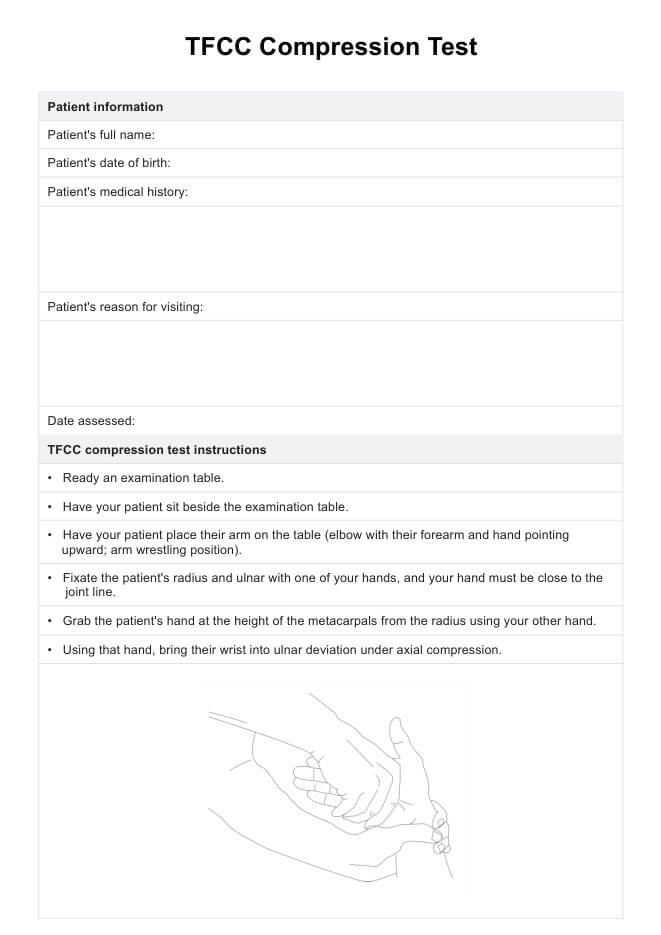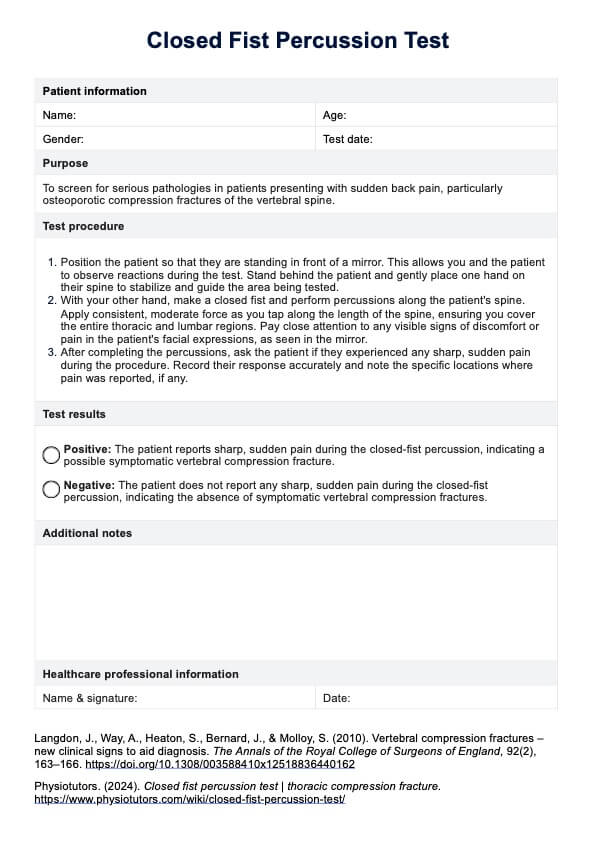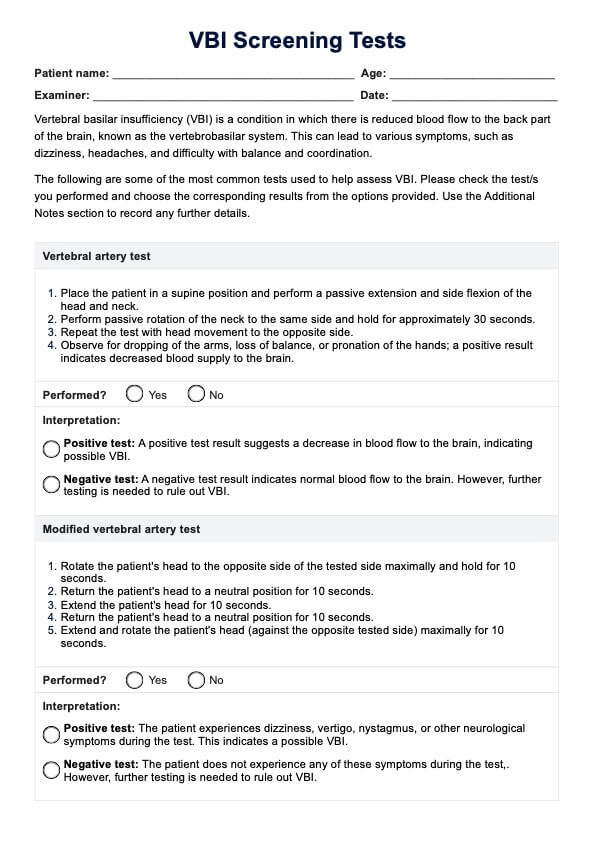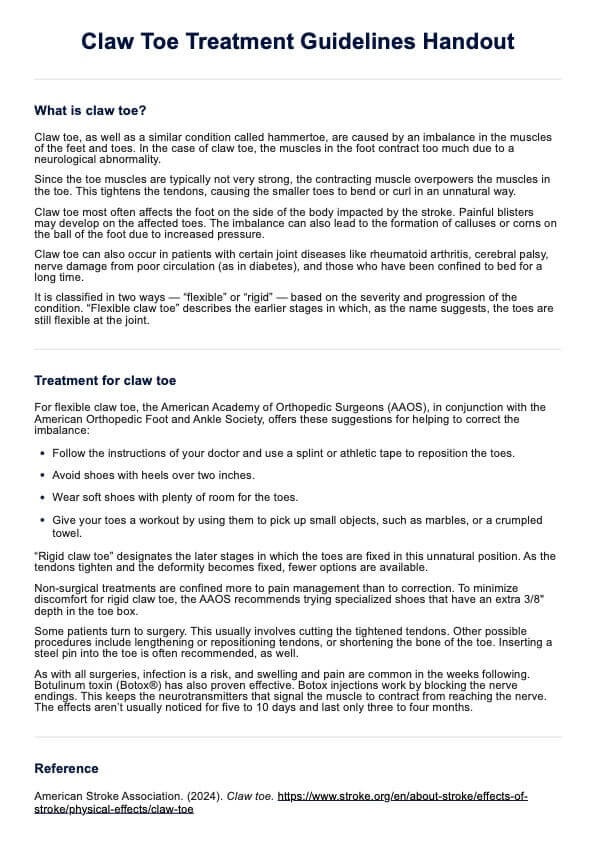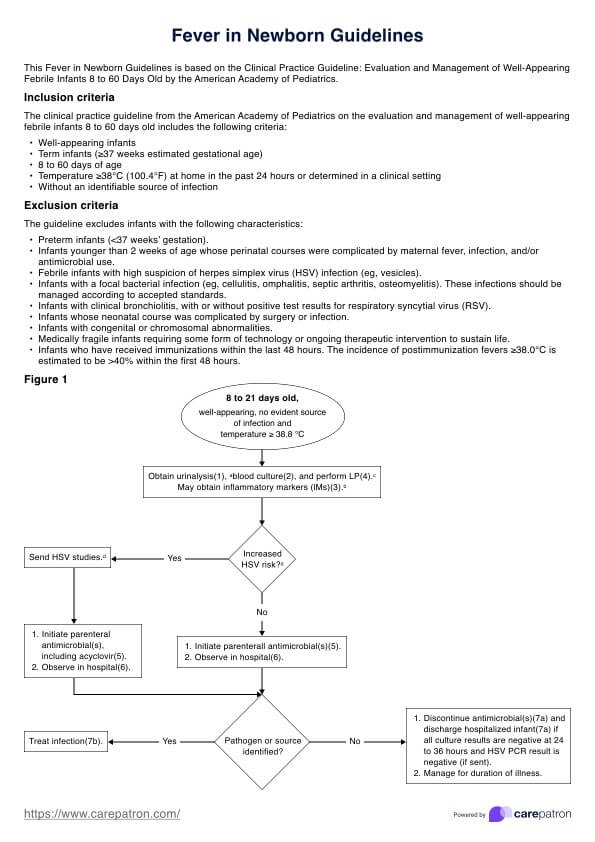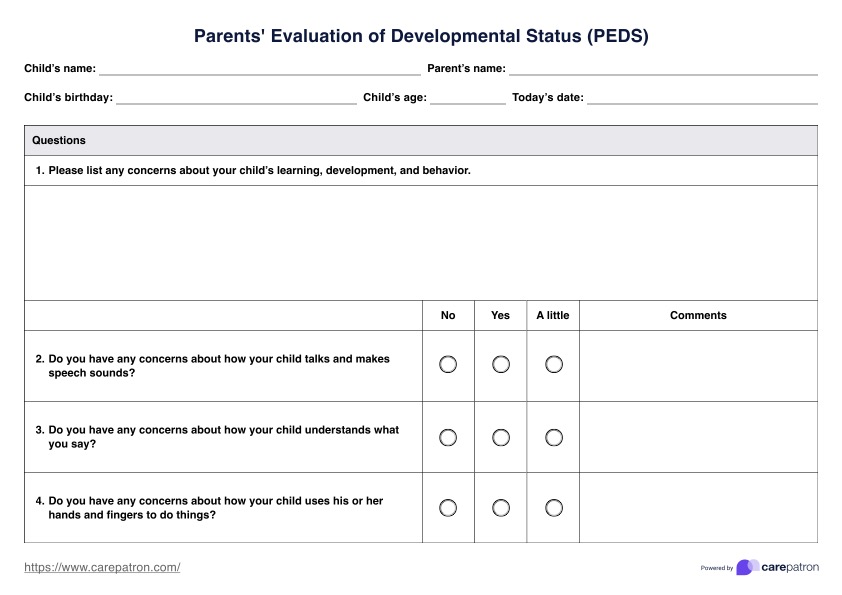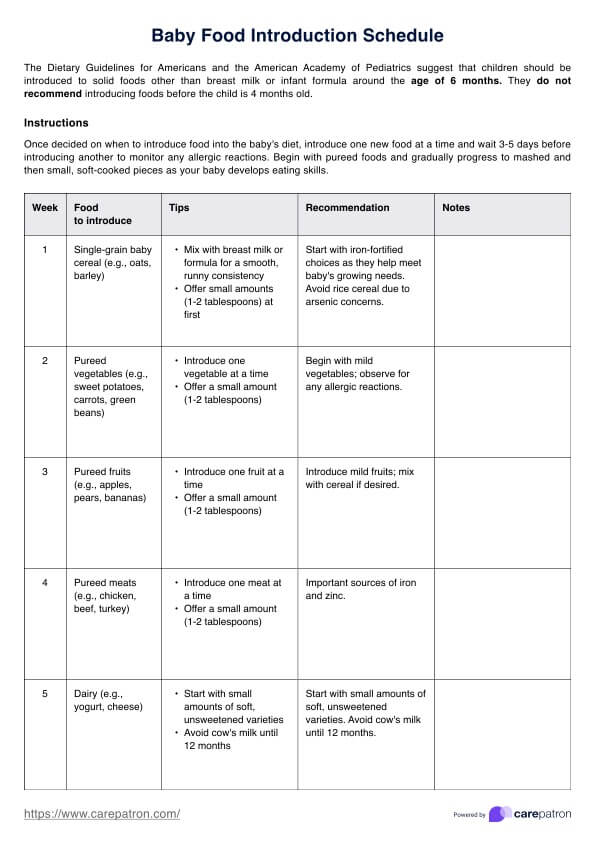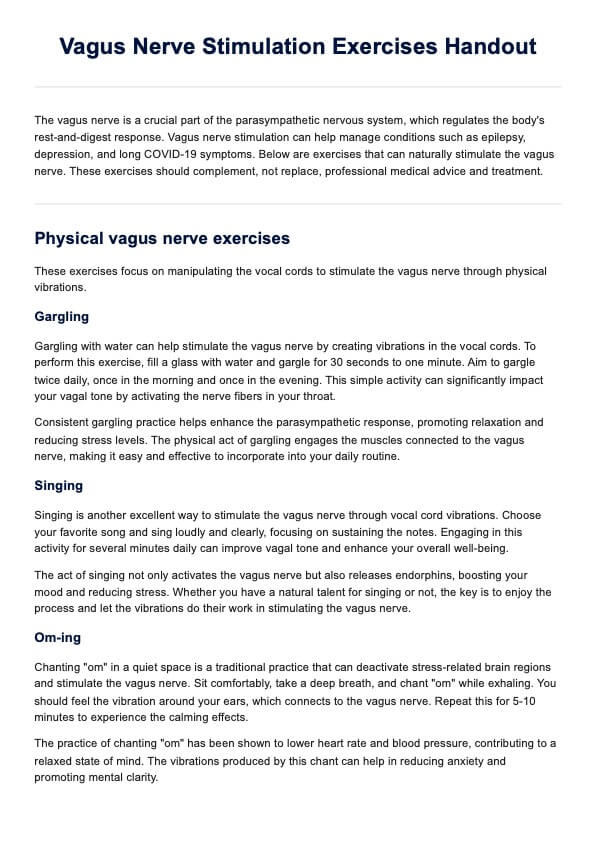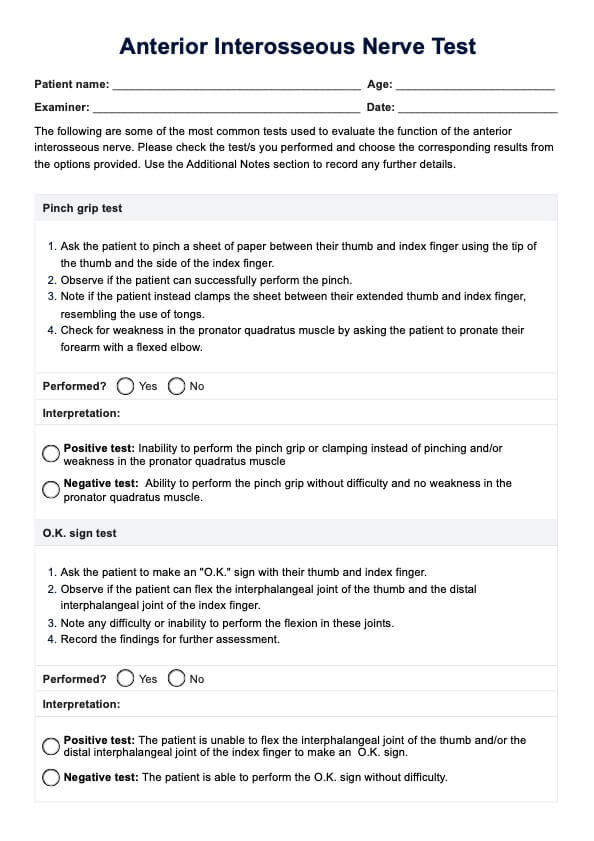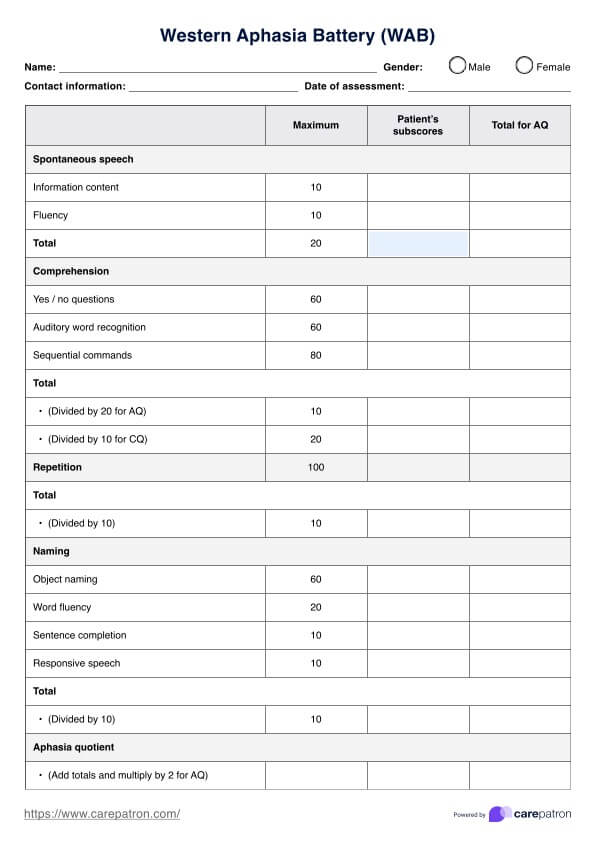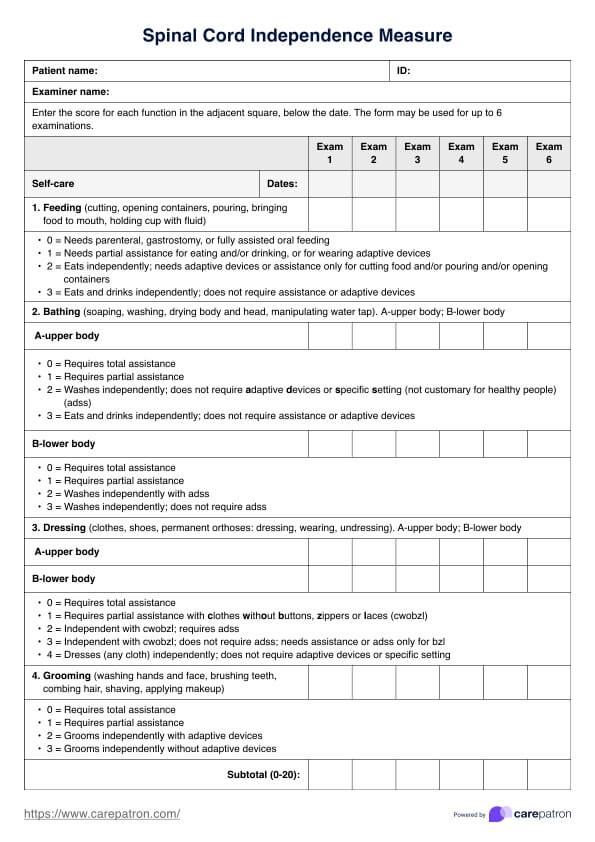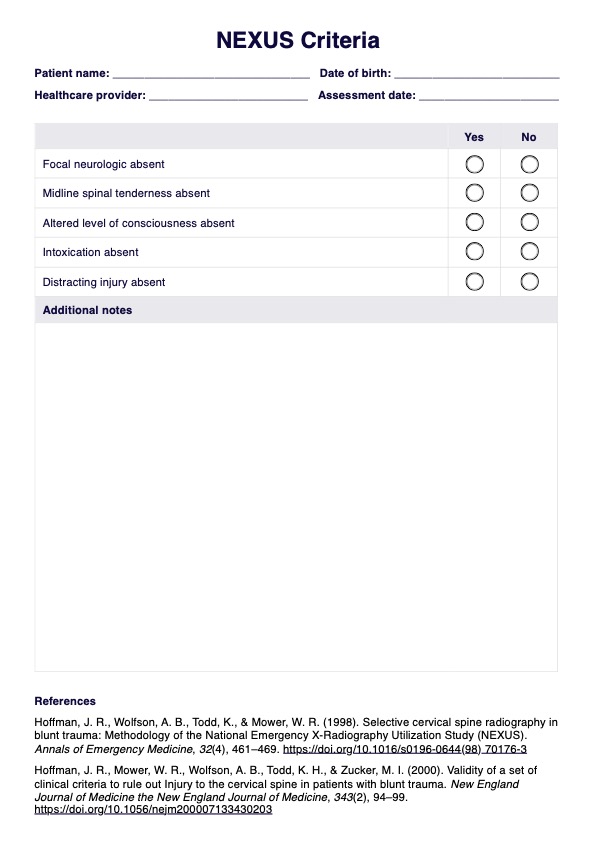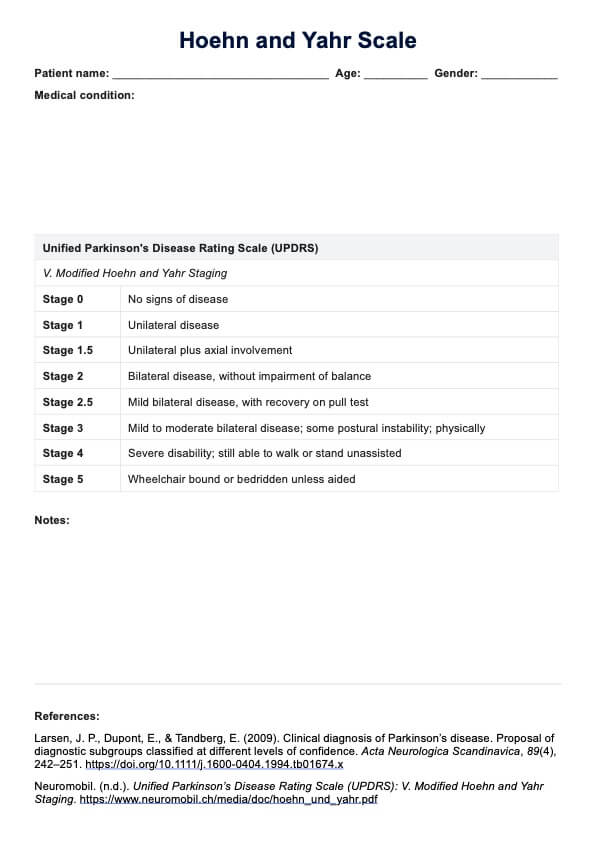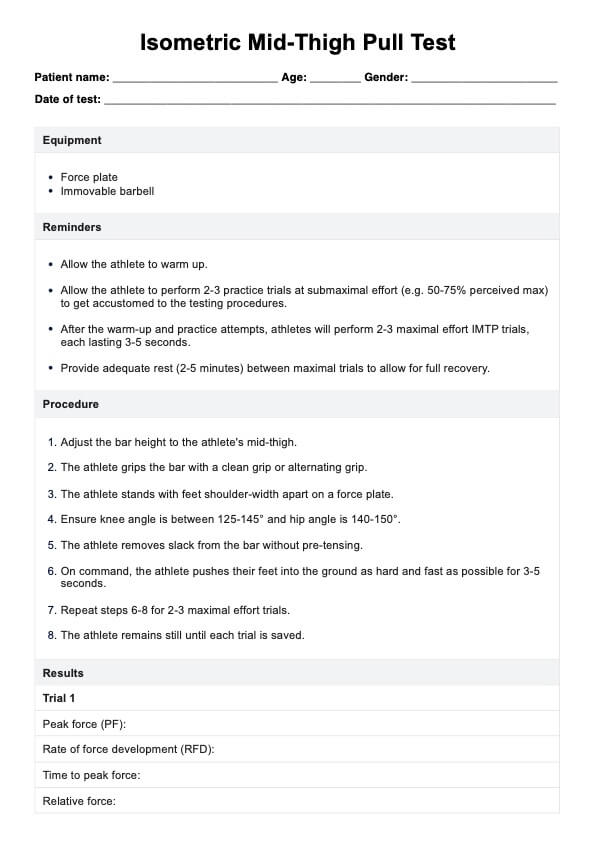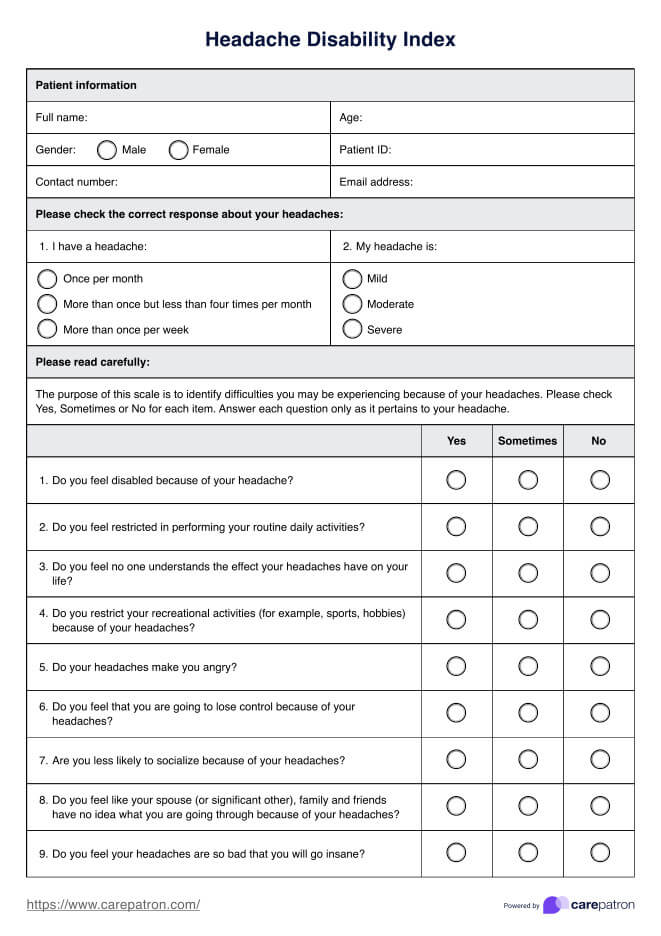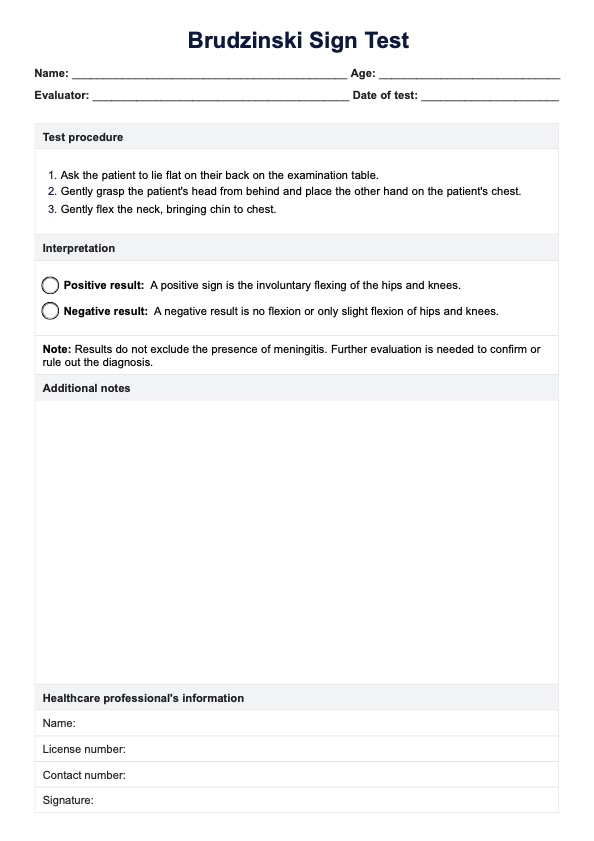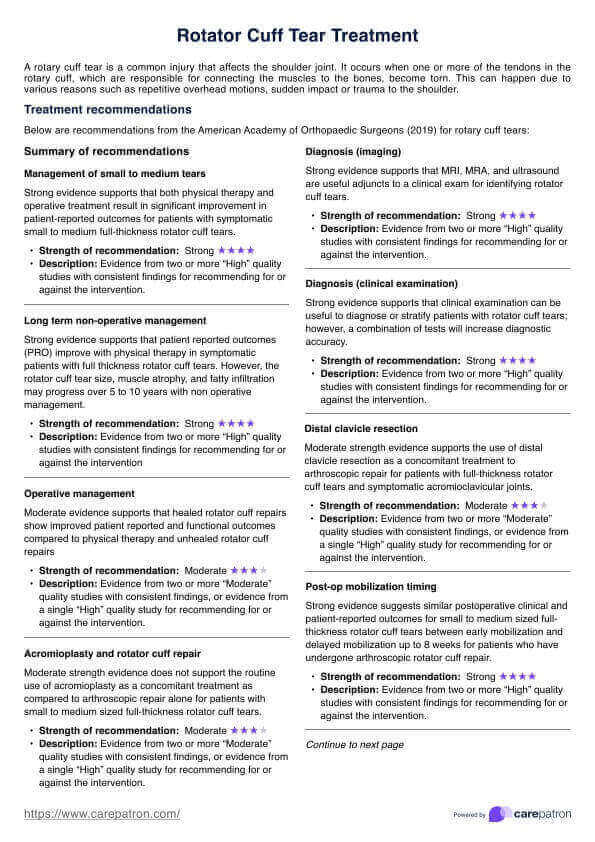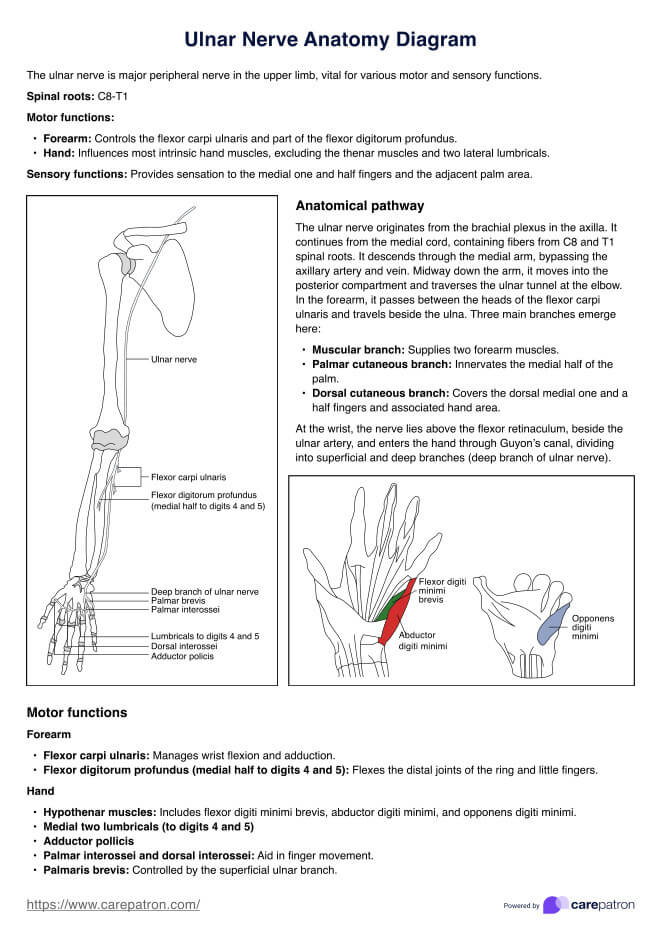MDS-UPDRS
Use this Movement Disorder Society-Sponsored Revision of the Unified Parkinson’s Disease Rating Scale to assess Parkinson’s disease in a patient.


What is a Movement Disorder Society-Sponsored Unified Parkinson's Disease Rating Scale (MDS-UPDRS)?
Similar to the Unified Parkinson's Disease Rating Scale (UPDRS), the Movement Disorder Society-Sponsored Parkinson's Disease Rating Scale (MDS-UPDRS) is a rating tool a practitioner can use to measure a patient's Parkinson's disease severity and progression. However, there are two major differences between the two tests.
The first difference is that the MDS-UPDRS is a modified version developed by the MDS review task force. In this version, they address problematic sections and shortcomings in the UPDRS by including nonmotor symptoms, differentiating mild signs and symptoms of Parkinson's better, and providing clearer instructions for the patient, their caregiver, and the rater. Between the two rating scales, this one is the better choice.
The second is that the updated and modified version includes, changes, removes, and moves certain sections around. Here's a list of the sections concerning Parkinson's disease highlighted by the MDS-UPDRS:
- Non-motor experiences of daily living (nM-EDL)
- Motor experiences of daily living (M-EDL)
- Motor examination
- Motor complications (which include motor fluctuations and movement disorders)
The nM-EDL and M-EDL comprise the daily living scale portion of this assessment.
The original had six sections:
- Mentation, behavior, and mood
- Activities of daily living
- Motor examination
- Complications of therapy in the past week
- Modified Hoehn and Yahr staging
- Schwab and England Activities of Daily Living Scale
The nM-EDL and M-EDL comprise the daily living scale portion of this assessment.
As for scoring, MDS-UPDRS follows most of the process of calculating the regular UPDRS total score. To refresh your memory, raters will score 0 to 4, with 0 being the highest and 4 being the lowest. If it's impossible to test a patient, there's also a “UR” option or “unable to rate.”
MDS-UPDRS Template
MDS-UPDRS Example
How does this MDS-UPDRS Scale work?
Planning to use the MDS-UPDRS Scale in your practice? Read below for a step-by-step guide on how to use and download our digitally editable and printable template.
Step 1: Download the template
You can access and download our template by clicking “Use Template” or “Download Template” in this guide or by searching “MDS-UPDRS” in Carepatron's template library on the website or app.
Step 2: Conduct the test
For the sections wherein the rater has to score, the rater must follow the provided instructions per item; ask the patient the provided questions or instruct them to do certain exercises; listen to the patient (and caregiver's) answers or observe the patient's movement, and as a final step, tick the appropriate score depending on the matching description. Here's a list of the corresponding sections described:
- Part IA: Complex behaviors, Non-motor aspects of experiences of daily living (nM-EDL)
- Motor examination
- Motor complications
Meanwhile, in the sections where the patient has to answer on their own or with the help of their caregiver, the patient must read, understand, think hard about the answers to the questions, and tick the appropriate score depending on their responses. Here's a list of the corresponding sections described:
- Part IB: Non-motor aspects of experiences of daily living (nM-EDL)
- Motor aspects of experiences of daily living (M-EDL)
If you're worried that you may not remember this step, don't worry. The template comes with comprehensive instructions and an indication of which sections must be completed by the rater or the patient and their caregiver.
Step 3: Total scores and proceed with interpretation
When the rater and patient complete the test and have totaled the scores per section, the expert may proceed with their interpretation.
Scoring
All sections shall be scored using the provided 0-4 rating scale. To obtain a score per item, the rater must observe the patient's response to given instructions or have the patient (and their caregiver) answer the questions provided.
Certain items may also require you to do calculations. The items are as follows: time spent with dyskinesias, time spent in the off-state, functional impact of dyskinesias, and painful off-state dystonia.
Add the item scores together to get the total score per section used for interpretation. For an easier time, you may record all the scores you've gotten in the tables at the end of the template.
When to use these MDS-UPDRS tests?
Similarly to the UPDRS, the MDS-UPDRS can be used in both clinical and research settings by practitioners and researchers focusing primarily on Parkinson's disease. To be more specific, they may use this scale and template to:
- Provide a disease prognosis to the patient
- Monitor a patient's response to a treatment or management plan for the signs and symptoms they're experiencing because of Parkinson's disease
- Evaluate if a researcher's therapies under clinical trials are effective or not
In addition, practitioners, researchers, and even caregivers may use the scale and template to identify the aspects of the patient's life that need further observation or intervention.
Who is this MDS-Unified Parkinson's Disease Rating Scale PDF for?
Like the UPDRS, any practitioner or researcher focusing on and specializing in Parkinson's disease will find a PDF copy of the MDS-Unified Parkinson's Disease Rating Scale beneficial. Aside from these, any professional caring for patients with Parkinson's disease will find this template useful.
Below is a list of who the MDS-UPDRS is specifically for:
- General Practitioners
- Geriatricians
- Neurologists
- Therapists (physio, speech, occupation, language)
- Parkinson's Disease nurses
Although it's mentioned that caregivers may find this template helpful, it's important to note and remember that they may not be considered a rater and can only participate in the self-questionnaire portion of the test or when the practitioner asks for more information that the patient can't provide.
Benefits of using the MDS-UPDRS
Using the MDS-UPDRS in practice can offer several benefits to healthcare practitioners, including:
Comprehensive evaluation
Compared to the UPDRS, the MDS-UPDRS is more comprehensive and includes detailed instructions on conducting and even scoring the test in the template itself.
Establish baselines for comparison
This scale can also be used as a baseline once the disease has been recognized. One only has to note down the date of the diagnosis so that the document may be considered the starting point.
Tracks progression
To formulate an effective treatment or management plan, one has to check the prognosis and progression of a disease. With our template, one can do that, especially if the practitioner conducts this test often or after the patient participates in disease-modifying therapies for a certain period.
Know more about a patient's condition
With this test being more comprehensive, since the creators have addressed the shortcomings of the UPDRS, practitioners can know more about their patient's conditions, including the more subtle signs and symptoms that the UPDRS doesn't consider or identify.
Fully digital
A fully digital MDS-UPDRS scale template can benefit the raters, patients, and practitioners who will use this as a resource. It saves time, money, and effort, is easily accessible, and can be stored in a secure EHR such as Carepatron.
Commonly asked questions
The Movement Disorder Society’s task force was the one who created the MDS-UPDRS by modifying and updating sections in the UPDRS.
Similar to the UPDRS, one uses the scale by either observing and rating the patient or giving it to them so they may reflect on and answer the provided questions.
Using the MDS-UPDRS scale in your practice, on the other hand, will completely depend on you as the expert. For a quick refresher, you may refer to the “When to use these MDS-UPDRS tests” section in this guide.
If the patient gets a total score more than or equal to 48 in Part 1, more than or equal to 42 in Parts II and IV, and more than or equal to 39 in Part III, they are considered to have a severe case of Parkinson disease in the sections where they got the equal or higher score.
Yes. Between both UPDRS scales, the modified version is better, but that doesn't mean you can't use the regular one. It would be best to still use the modified version after so you can track any consistency in results between the two. The more physical performance measures you use, the more ground you can cover when it comes to a patient's Parkinson's disease.


